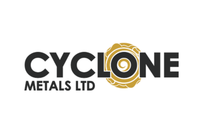Vale CEO Fabio Schvartsman says that the company will cap its iron ore production at 400 million tonnes annually unless prices increase — something analysts don’t see happening in the near term.
Brazilian miner Vale (NYSE:VALE) has put a self-imposed cap on its iron ore production well below its stated capacity.
In a wide-ranging interview with Estado de S. Paulo on Sunday, Vale CEO Fabio Schvartsman said that the company would limit its annual iron ore production to 400 million tonnes, despite a company-wide capacity of 450 million tonnes.
Schvartsman said that only if the iron ore price increased again would the company increase its production, but until then it would take it easy considering how turbulent the past few years had been.
Schvartsman said that Vale was well positioned to kick goals into the near future, with volatility of iron ore prices down.
He said in the interview that Vale had ‘promised too much’ and not delivered in the past — something Schvartsman said the company could avert in the future with its higher iron ore grades to appeal to Chinese buyers, which are now under pressure from Beijing to increase efficiency and decrease pollution and waste — demands that require steel mills to seek higher iron content.
For that, Vale has the S11D Eliezer Batista complex in Pará state — which it touts as the largest single mining complex in its history.
S11D can produce 90 million tonnes of iron ore annually grading 66.7 percent, according to Vale, which began mine earthworks in 2014, and began operations in 2016. The ‘Northern System’ of mines, of which S11D is a part, contributed almost half of the total iron ore produced at 46.2 million tonnes.
In their August commodities forecast, analysts at FocusEconomics said that they saw iron ore prices falling in the medium term, against the backdrop of healthy global supply and the projected easing of Chinese steel demand.
“Iron ore prices are forecast to average US$61.5 per metric ton in Q4 2018 before moderating further to US$58.8 per metric ton in Q4 2019.”
Most analysts recently polled by FocusEconomics see iron prices ending the year lower than where they stood at the beginning of August (around US$67 a tonne) — based on those predictions, Vale is unlikely to be increasing production in the near term.
In July, Vale had reported that production for 2018 was on track to meet guidance expectations of 390 million tonnes despite a number of setbacks over the year — such as heavy rains in April and a truck strike in May that, while disruptive, did not prevent Q2 from being a record-breaking quarter.
Another iron asset, the Samarco iron ore mine Vale shares with Australian miner BHP (ASX:BHP,LSE:BLT,NYSE:BHP) was kicked down the road by its joint-venture partner to beyond 2019, keeping its output out of Vale’s numbers.
The pushing back of its restart — despite holding most of the necessary permits — hinges on negotiations with Brazilian prosecutors over the construction of a tailings dam.
For now, Samarco has no restart time, although Vale has often stated that it’s hoping for the mine to restart as soon as possible — and even quoted 2018 or early 2019 as possible dates — now seemingly well out of reach.
In New York, Vale was trading at US$13.59, up 2.8 percent as of market close on Monday (August 27).
Don’t forget to follow us @INN_Resource for real-time updates!
Securities Disclosure: I, Scott Tibballs, hold no direct investment interest in any company mentioned in this article.
